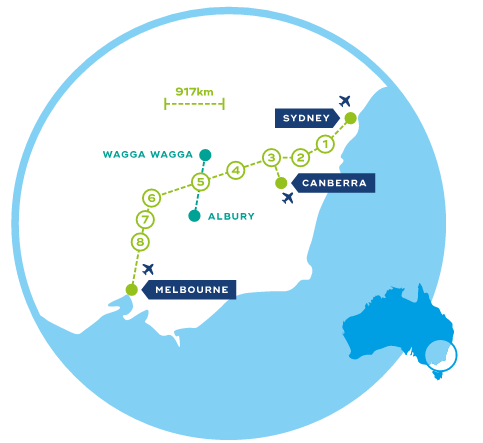A $200 billion plan to develop a fast rail link between Melbourne and Sydney and to establish eight “SMART” inland cities was today launched at the Royal Melbourne Institute of Technology.
Billed as a comprehensive, nation-building plan to build the world’s largest high speed rail
infrastructure and develop inland Australia, the high speed rail project was developed by the private company Consolidated Land and Rail Australia, with RMIT set to play a key role.
CLARA Chairman and co-founder Nick Cleary said that the plan, to be funded through the use of land value capture, would represent a “quantum leap forward” for transport infrastructure and for the development of regional Australia.
“This is a once in a lifetime chance to change Australia for the better; better for rural areas, betterfor the environment, better for the economy and better for jobs,” Mr Cleary said.
“I encourage governments at all levels to work with us so we can commence the work to shape our nation’s future.”
The eight compact, sustainable cities central to the proposal were projected to consist of 100,000 to 200,000 dwellings which would accommodate 22% of Australia’s projected population growth, and
would reduce pressure on the overcrowded suburbs of Sydney and Melbourne.
The cities, along with the connecting fast rail links, could be completed within 35 years, while the first stage of the project – the development of a city in the Greater Shepparton region connecting to the centre of Melbourne within half an hour- could be completed within the decade.
Much of the land needed for these new cities has already been acquired it was revealed today.
“CLARA’s plan is a cities and decentralisation plan, not a high-speed rail plan,” Mr Cleary said.
“High speed rail is an essential part but it’s only the beginning; it’s the new inland cities which will transform our nation.”
It is in the designing of these “SMART” cities where RMIT is set to play a key role alongside CLARA, as RMIT’s Dean of Media and Communications Martyn Hook outlined at today’s launch.
Through a series of design studios RMIT academics and Masters students of urban planning and
architecture will collaborate to “research and understand” how to best develop eight new smart
cities.
“We will seek to reveal how these new compact cities might embrace technology, how they might
form a sense of community that resists the car and foregrounds health, identity and creativity at its core,” Professor Hook said.
RMIT’s Vice Chancellor Martin Bean, who hosted the launch, said that the university would play a
consequential role in the proposed project.
“RMIT has significant resources to contribute to the creation of brand new smart cities along the
train route,” VC Bean said.
“Our researchers have much to offer around questions, big questions in this project of design,
renewable energy, landscape regeneration, compact cities and entrepreneurship -and we can’t wait
to get started.”

Former NSW Premier Barry O’Farrell addresses a crowd of television cameras at the RMIT Cinema on Thursday
Fast rail proposals have had a chequered history in Australia, with numerous similar projects falling by the wayside since the Hawke government first considered a link between Melbourne, Canberra and Sydney in 1984.
What makes this proposal different is its innovative use of land value capture which, according to
CLARA’s pre-feasibility business model, will mean the project can be privately funded and paid for
from the proceeds of the city development rather than from government coffers.
The project is also supported by a high profile Advisory Board comprised of, among others, former
adviser to Bill Clinton Mark Doyle, former NSW premier Barry O’Farrell, and former Victorian
Premier Steve Bracks.
“The CLARA plan is the most significant, well-developed, and advanced regional development and
rail plan Australia has seen to date,” said Mr Bracks.

